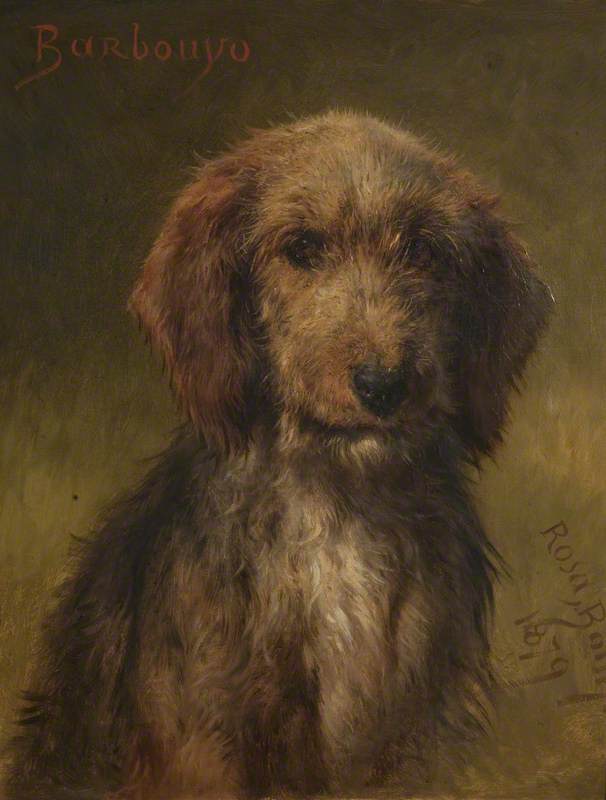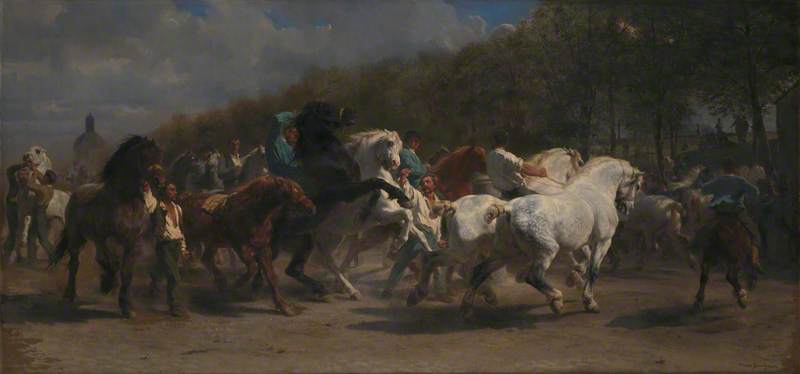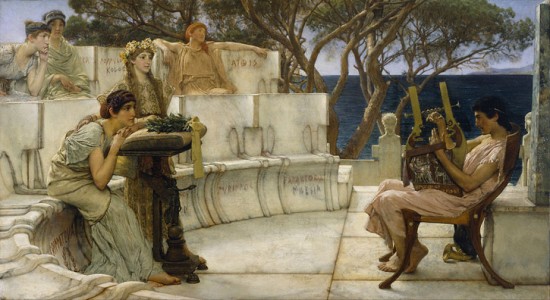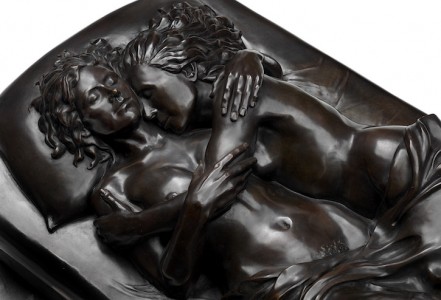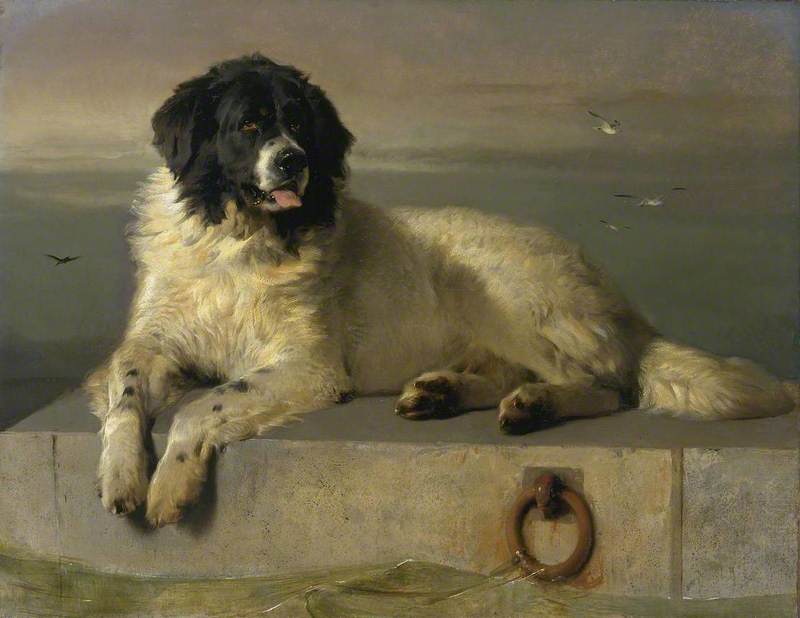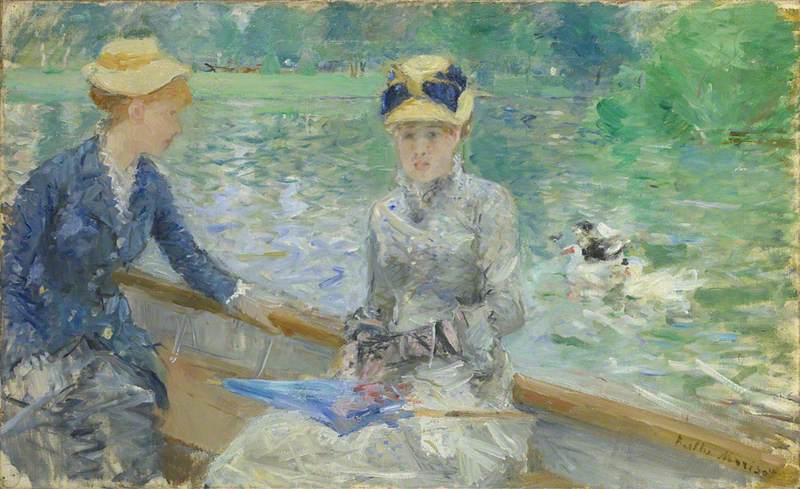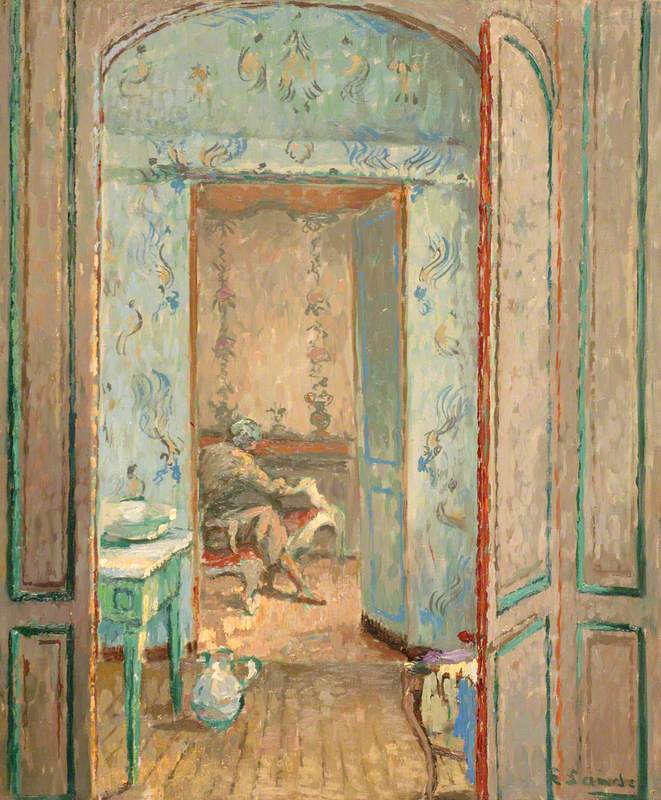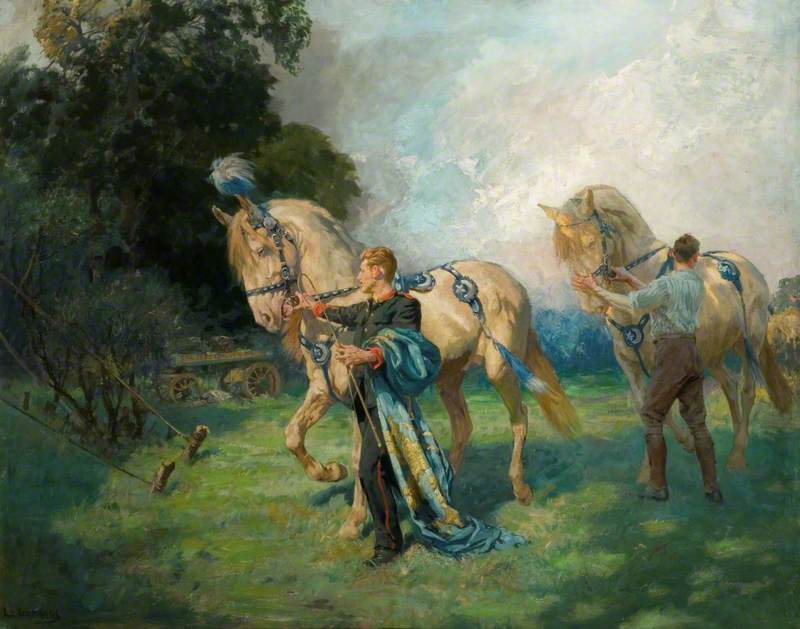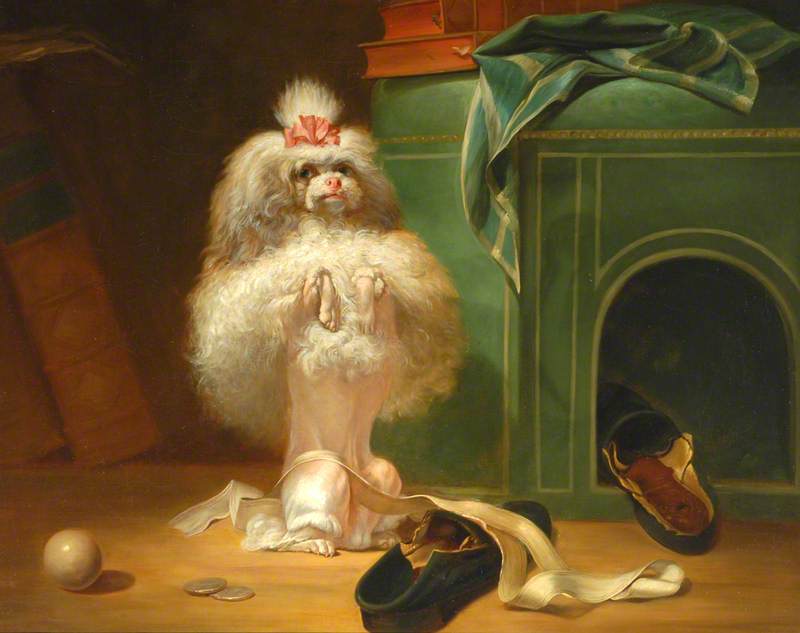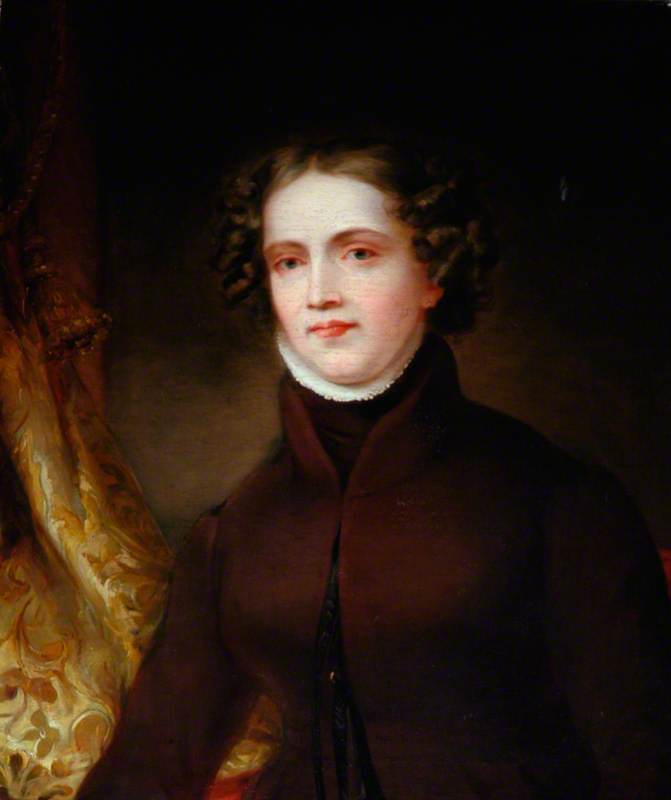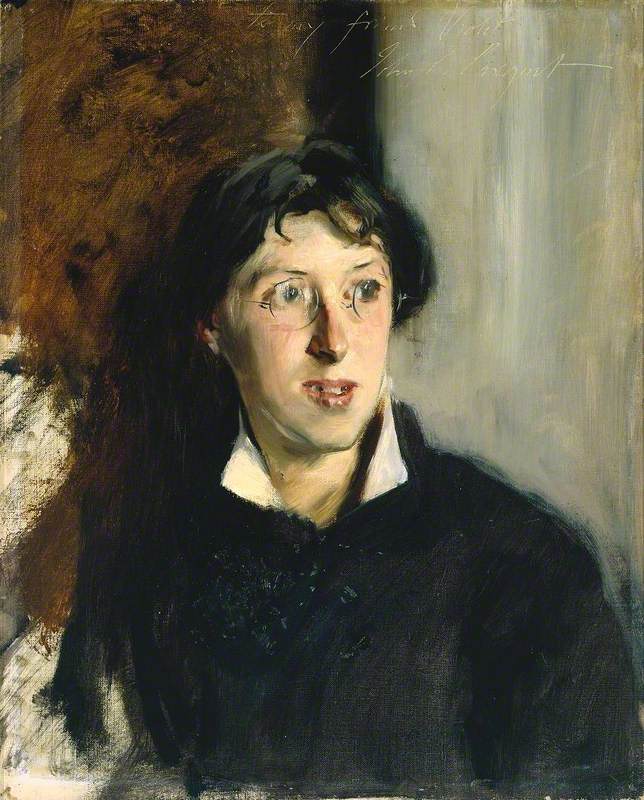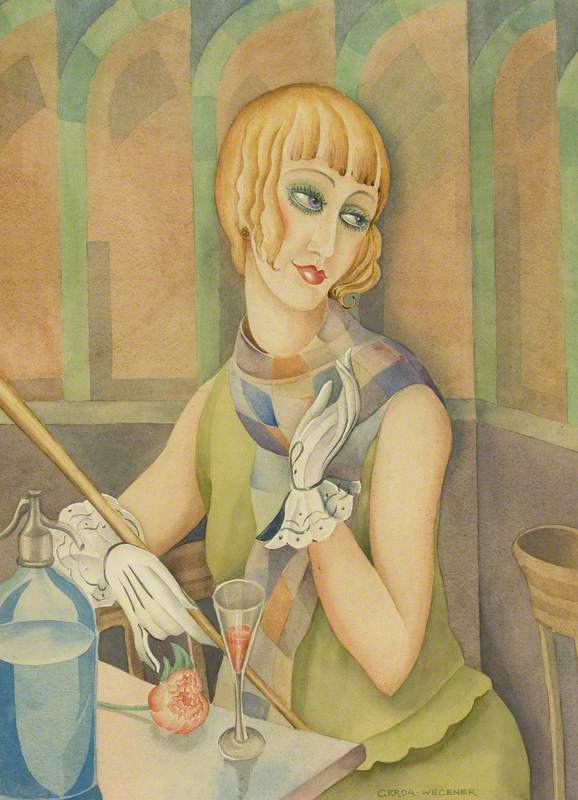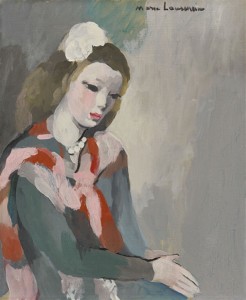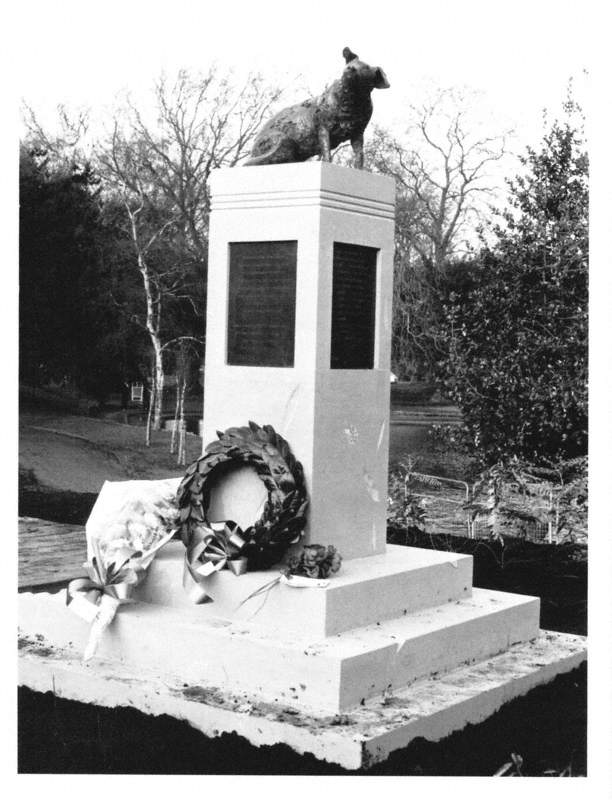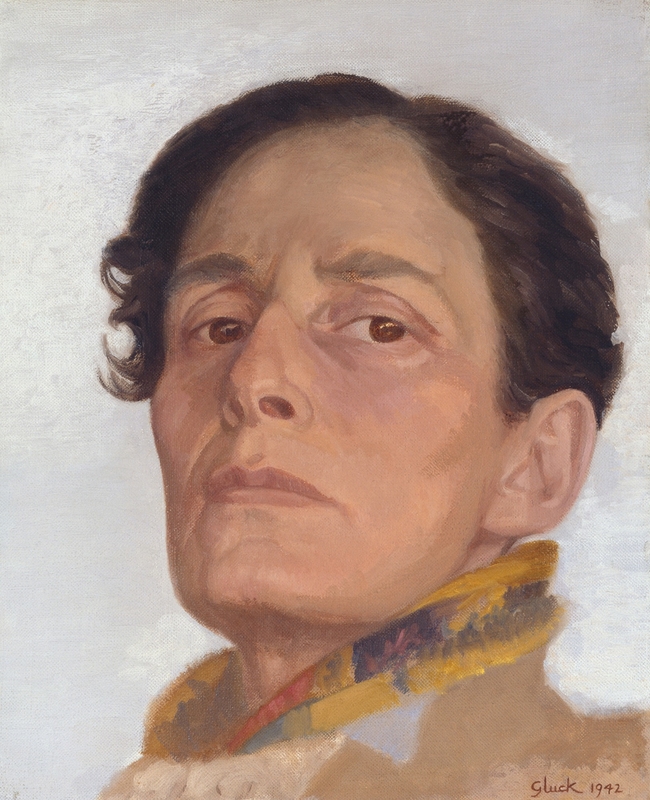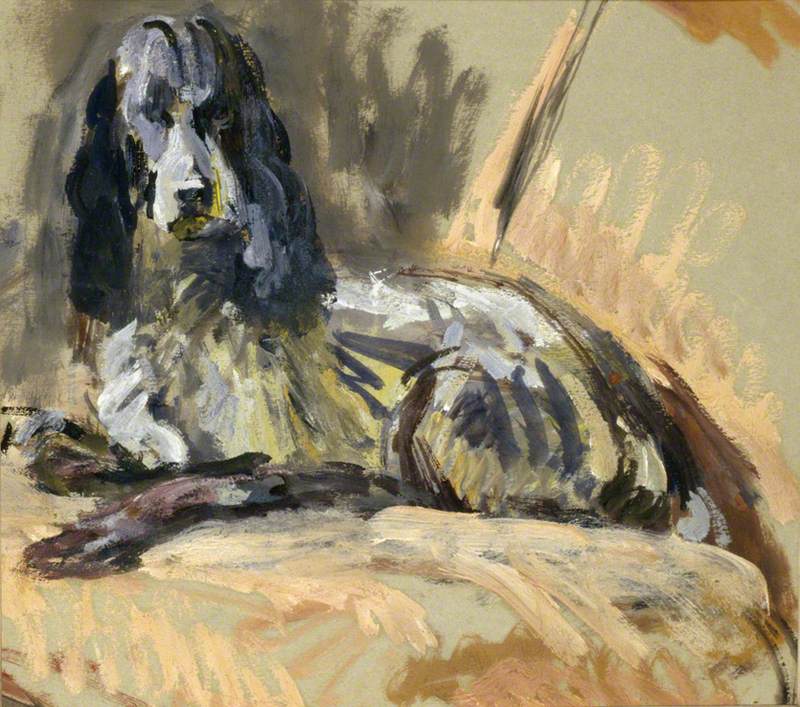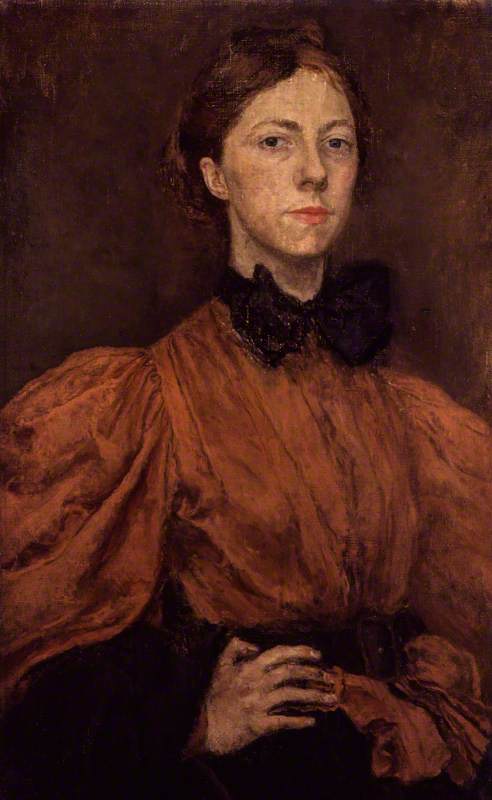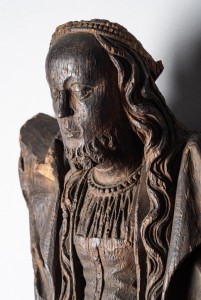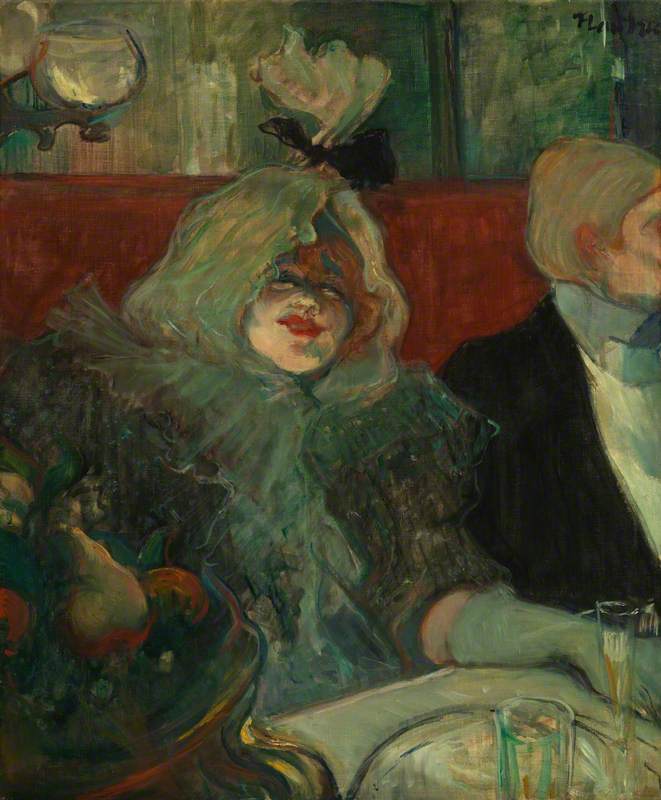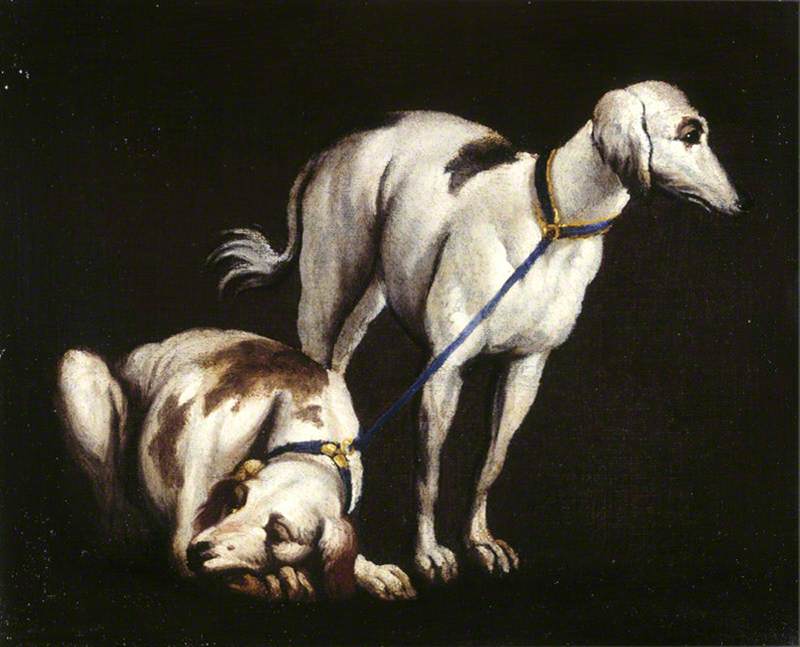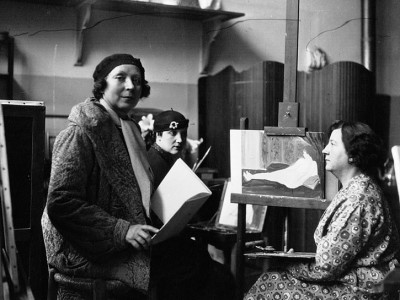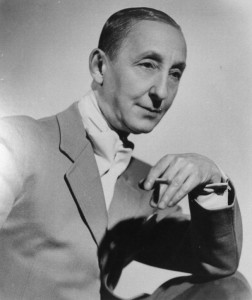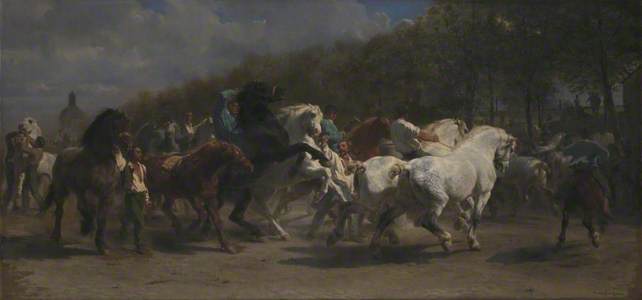Rosa Bonheur was born in Bordeaux, France, in 1822. Her early education was disrupted – she was expelled from a number of schools – until her father, a landscape and portrait painter, intervened to begin formally training her as an artist. Her work was first exhibited in the Paris Salon when she was 19, at a time when women were often excluded from the art profession.
Barbouyo, in the collection of Blackburn Museum and Art Gallery, illustrates the skilled style of realism Bonheur was capable of and celebrated for. Finished in 1879, it is a similar piece to her earlier depiction of an otterhound Brizo, A Shepherd's Dog, now in London's Wallace Collection.
She studied the anatomy and osteology of animals in abattoirs and in the École nationale vétérinaire d'Alfort in Paris.
For her painting The Horse Fair (in The National Gallery), she was granted official police permission to wear men's clothing, which allowed her to attend horse markets, sketching and studying the animals' movements without drawing attention to herself.
She cropped her hair, chain-smoked and wore trousers, shirts and ties, and lived alongside her companion and partner Nathalie Micas for over 40 years. As a queer icon comparable to the likes of England's Anne Lister, Bonheur could potentially be characterised as the French 'Gentleman Jack'. After Nathalie's death in 1889, Bonheur formed a relationship with American painter Anna Klumpke, lasting for the rest of her life. Buried alongside both women at the Père Lachaise cemetery in 1899, the shared headstone reads: 'Friendship is divine affection'.
You can see more art from the Blackburn Museum and Art Gallery on Art UK and find out more on the museum's website.
Catherine McManus, Blackburn Museum and Art Gallery
